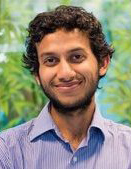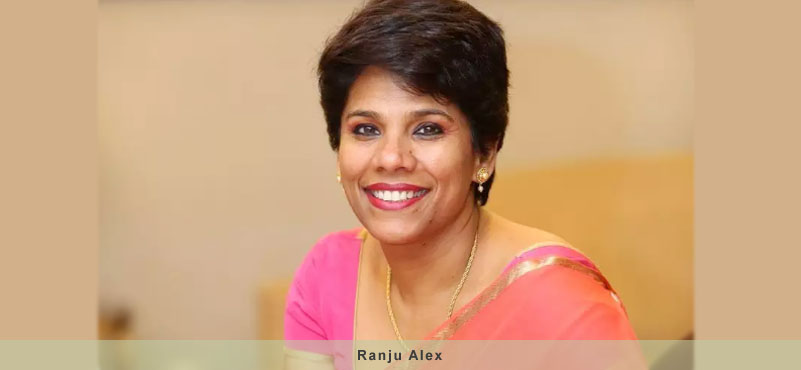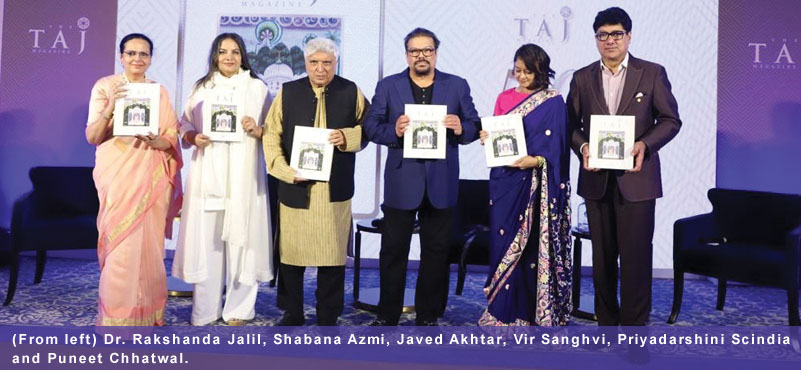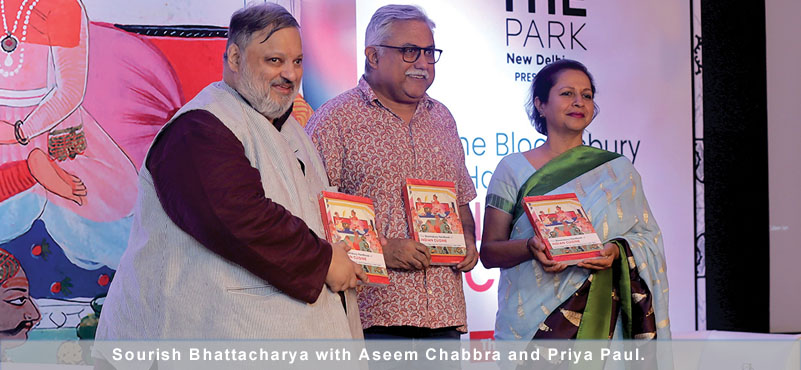When you engage OYO’s founder Ritesh Agarwal in a candid conversation, barring his youthful exuberance, you are unlikely to come across any other sign conveying that he is yet to touch his mid-20s mark. Polite but assertive, the wonder boy of Indian travel tech space, may not have exactly been a favourite with the branded property operators. But his conviction to broaden the supply pipeline by mainstreaming the ignored properties seem to be rock-solid. TourismFirst recently buttonholed him on the sidelines of an event where he responded to everything that is said in favour or against his business model in the market place. Edited excerpts:
 OYO’s short journey so far has been fabulous. Even your detractors would admit that you have emerged with a bang. And it is not simply about too fast a growth attained by a start-up. It is more about the difference it is making to the operational value chain, in unlocking value of the neglected assets. I don’t know if in recent times, you have got the time to analyse your journey so far. But if you step aside for a moment and try to analyse all of this, would you call it a dream run?
OYO’s short journey so far has been fabulous. Even your detractors would admit that you have emerged with a bang. And it is not simply about too fast a growth attained by a start-up. It is more about the difference it is making to the operational value chain, in unlocking value of the neglected assets. I don’t know if in recent times, you have got the time to analyse your journey so far. But if you step aside for a moment and try to analyse all of this, would you call it a dream run?
Of course, nobody in our team had anticipated this kind of ride. We had started with a simple aspiration: there is a massive problem out there in the accommodation space for travellers and we have to solve it.
Before you proceed further, I am quite curious to get your response on this and I am sure others would have asked you too in the past. What was that instance which sounded a bell in your mind drawing your attention to this segment?
Before OYO happened, I used to run a marketplace called Oravel Stays which was more like a booking marketplace where consumers could book accommodation. While running that I realised most of our customers did not have great experience. Their argument was: getting an accommodation for Rs. 1500 is OK but you are not taking any ownership and somebody unknown is selling it. So how do I trust that guy? So we realised quite early that solving the predictability issue was very important in this market. That is the time when it hit us, we are running this business not to build one more company. But solving a big problem. And we decided to target it more than anything else. It is with this approach that signed up our first partner and he was very kind to have trusted us considering our age.
Who was your first partner?
The first partner was a gentleman called Rajesh Yadav at South City – I, in Gurgaon. The occupancy rate of his property was not very high. So he decided to take a chance with us saying that if his occupancy rate improves, we will become close partners. If not, he had the leeway to throw us out anytime. For us, that was a fair deal. And we worked very hard to set the standardization of the hotel, in ensuring that the minimum promises that we make should be fulfilled. In Gurgaon, getting a clean room at Rs 1600 was impossible three years back. And soon we started receiving positive response. With this hotel started filling up, other similar properties in the area also began signing up with us. And one thing led to the other. We spread out from Gurgaon making partners in other parts of North India and eventually in the entire country. But we still believe we are a small part of what we can become.
And you are certainly surprised with the pace you have grown?
Naturally. Every start-up goes through this hockey stick phase. We knew that if we continue working hard and Insallah continuing to get support from the environment and partners, the hockey stick shaped growth would come. The only issue was when would this happen? We ourselves had not anticipated that our consumers and hotel partners would trust us so fast.
How has been your growth trajectory in the recent past?
Just to give you a sense of how we are growing – in December 2014, we had partnered with 39 properties in Gurgaon. And by December 2015, we had partnered with over 5100 properties across 140 cities in India. This has indeed been a massive growth period for us.
How long will this dream run continue? Can you foresee any saturation point in the medium run?
We started with the vision that we will take anything real estate, standardize it and bring it online. In my belief, in the hotel segment we are only one percent of the total market in the online plus offline world put together. Of course, in the online segment, we are the market leader. But that does not mean anything if 96 percent people are transacting offline. Our vision is to make sure that we reach out to each of those users and tell them the value of moving from offline to online transaction mode. On that front, we have a very, very long way to go. So we believe that our growth will continue for many years before we have reached to a scale where we have solved the problem and one in three people or one in two people chooses OYO as the preferred medium to choose accommodation whenever and wherever he travels. .
There is a strong section in the organised hospitality who call OYO a disruptive force because you have upset existing equations in the market. How do you respond to it?
In my belief, people are referring to us a disruptive force possibly in a positive sense. If you see in the last two years, the market has not declined. Everybody has, in fact, grown – hotels, OTAs, and even the volume of sign ups of domestic and international brands have grown. So while we have become leader in a specific segment, others have also grown at the same time. It is clearly not a zero-sum game. Unfortunately, a lot of people look at it this way that if OYO has taken customers, it would have gone from somewhere else. But the reality is so many people are starting to stay at hotels or travel because now they know that in Rs 1500, they can get a clean, comfortable and affordable room. This has created a very different equation now. In India, at least 14 times of the consumers stay with relatives to the people who stay in hotels while travelling. The reason is simple: getting a clean, comfortable room has not been easy. Our belief is that we are going out to get all those segments attached to ourselves and hopefully to our competitors who have different relevance to customers.
But the allegation against you is that you are indulging in deep discounting. Your detractors would like us to believe that because of this kind of offering, your business model is flawed and while you are getting all kind of financial support at this stage because of the right kind of buzz, there would be a time when the investors in your venture would get jittery. How would you respond?
It’s a very fair question. But it is important to remember that OYO unlike many other companies got in business with very, very profitable routes. When we used to operate in Gurgaon, the average market price for a room used to be Rs 3000 and we used to sell it for Rs 1200. And we were still making 30 percent margin. If you look at the equation: in the overall market, there are five percent hotels who have access to corporates and travel agents and they get the most amount of business and often jack up prices. And the rest 95 percent struggle to get business. But we have democratised demand. We are enabling 95 percent with the top 5 percent to get the demand. People who feel concerned about it belong to that 5 percent who feel that their business has gone away to other 95 percent because of deep discounts. Let me share this perspective with you. Today there are multiple markets where OYO not only makes money but also creates a positive cash flow to a degree that all of us can take that money and fund some other city. The reason is: we are not investing in discounts. Our hotel partners themselves are giving discounts because they are saying that instead of running 10 percent occupancy which they were earlier doing, let’s target 60-70 percent occupancy level with 20 percent cheaper price. They can do it because their costs are static. So the question is: have we created occupancy growth? Yes. Have we created a significant surge in the demand for the remaining 95 percent of hotels? Yes. Have we done it at the cost of decreasing the costs and the priceline of top 5 percent hotels? Yes. You put together these facts, and you will find our model is on a sound wicket.
Not too long ago, representatives of branded properties used to show complete aversion to the proposition of joining hands with you. Have you begun noticing a change in their attitude? Especially the branded budget and the mid-segment, have they become more receptive to your platform?
Yes, we have seen a significant attitude shift. A lot of brands have become our partner in the mid-segment as well. People out there are more receptive to the fact that OYO is a household name and with consumers’ trust in us in the mid-market grown significantly, it will create value for both for us and them.
Recently, you have also shown your ambition to go beyond Indian boundaries by making your debut in Malaysia. Why did you choose Malaysia as your first overseas turf?
A couple of reasons for that. First of all, we feel extremely proud that finally after such a long time cutting across various segments, a concept has been developed in India which is finding emulation in so many parts of the world. Today OYO has multiple copycats outside of India. So we felt that there is a significant amount of value OYO can create outside the country. South-east Asia was a natural market where we wanted to move in. And Malaysia is the market which has easiest governance practices to launch in that country. We felt that if we have to go, experiment and learn in the international markets so that we can put our foot on gas and grow aggressively in the coming years, Malaysia is the right place. After Malaysia, we will be focusing on other markets in the region.
Finally, after building a scale which is enviably looked upon by many, what big milestones you will be chasing in the next two years?
There is only one clear milestone for me. Taking OYO experience to the next level. Earlier, the problem was to get clean and comfortable rooms. Now that OYO has provided it, customers are looking for better services, better interiors, etc. Our challenge would be upping the game in terms of quality and all our loyalists getting far improved services.
In terms of room volume in your kitty, what is your outlook for the near run?
We are currently close to 65,000 rooms. And by the end of this year, we are expecting to have around 2,00,000 rooms with our partners.




































